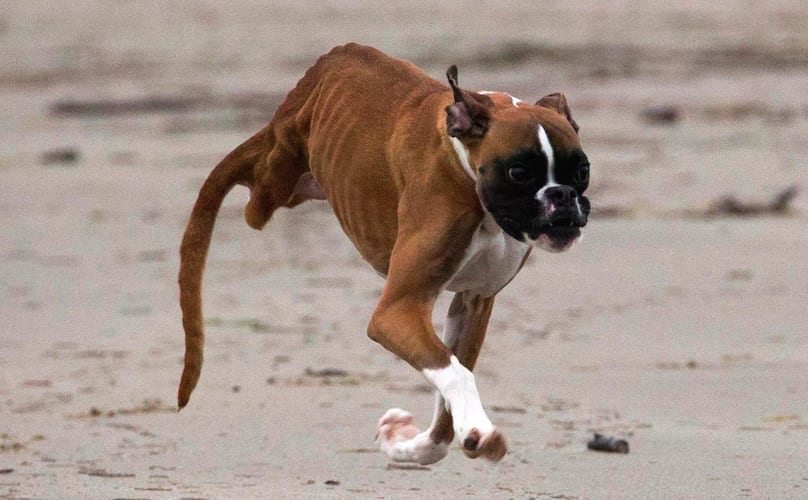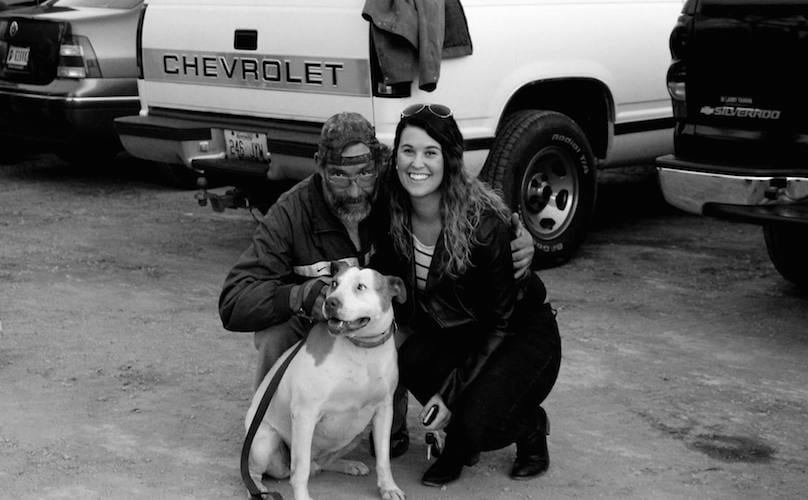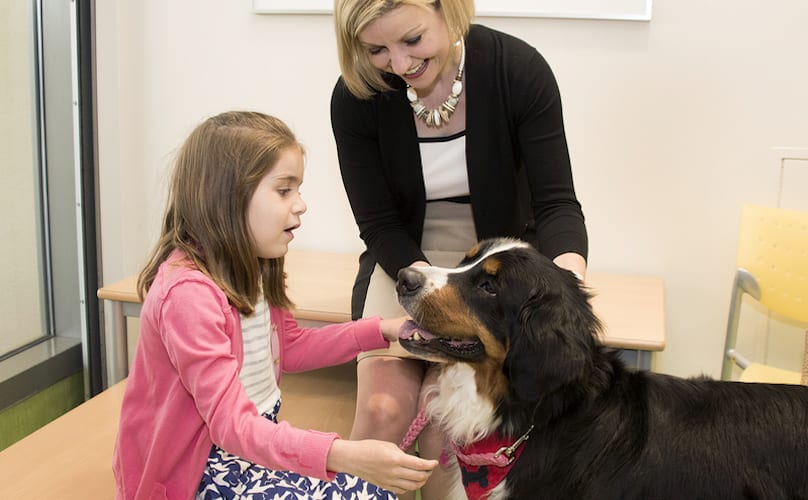From all of the photos I had seen of Michael Vick’s old property, I believed it to be a mansion. A grandiose home for a man who was once a rising NFL star. It’s not.
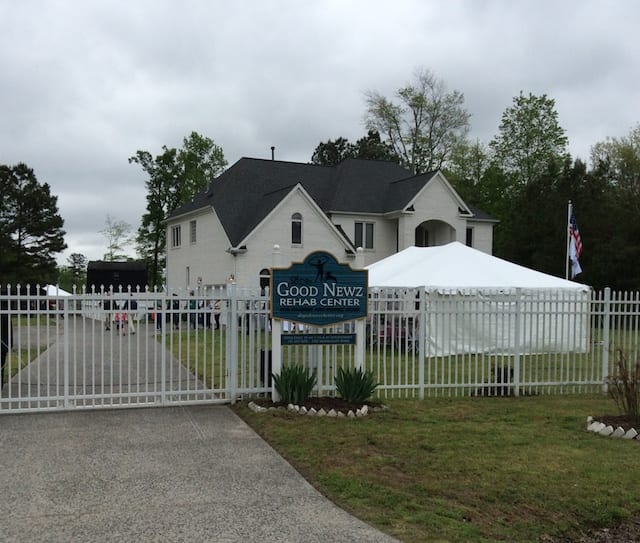

It’s a white brick home, much smaller than you might expect. The finishes inside are builder grade, which was quite a surprise. Later, someone told me that when Vick bought the property, the sheds were there before the home was. It then became clear why this house didn’t measure up to everything I had seen in photos. It wasn’t meant to be a “home.”
[bp_related_article]
The house that was once Bad Newz Kennels was bought in 2011 by Dogs Deserve Better and remade as Good Newz Rehab Center, where dogs who have been chained or penned are rescued, rehabilitated and made available for adoption. It’s completely fenced and a large white gate runs along the front that must be opened for anyone visiting. Tess (Layla‘s mom), Rachel (Oscar‘s mom), and Kevin (Ray‘s dad), the group I was with during my time in Virginia, had all been to the property the day before and had received a tour. They had been in the house, had been in the sheds, had seen the kennels, and had walked through the field of trees. The trees were the reason that we were all there that weekend.
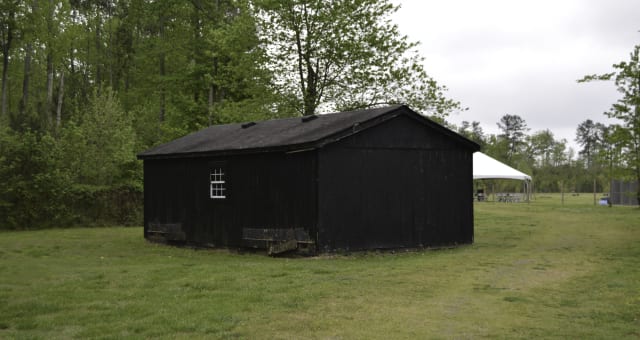

Saturday, the day of the tree planting ceremony, was my first day at Good Newz Rehab Center. Once on the property, we planned to do an informal tour. Tess was the one who accompanied me to the first shed, just a squat black structure from the outside. A “No Trespassing” sign still hangs on the front left side door, weathered by the years.
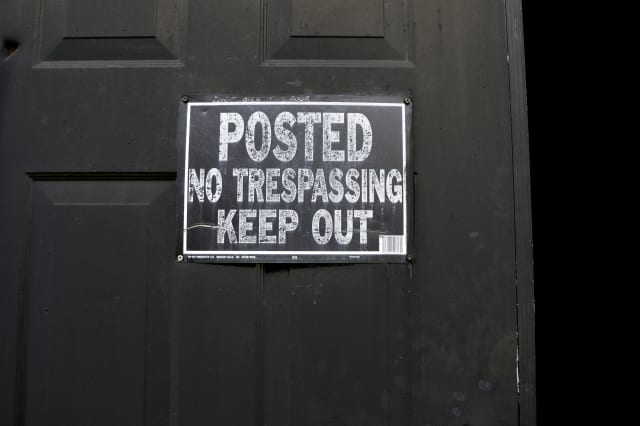

There is a small metal clasp on the front doors of that shed and a screwdriver is placed through it to secure the doors shut. Inside, the first thing you notice is a thick metal pole capped with a flat circular top in the center of the room. Multiple chains, some bearing rust, are wrung around the pole, still in the same position they were found over nine years ago on April 25th. To the right of the pole, there are a few marks – seemingly from chains being dragged against the plywood floor. This is also the area where the rape stand would’ve been. A discarded stub of a cigarette butt sits next to the chains.
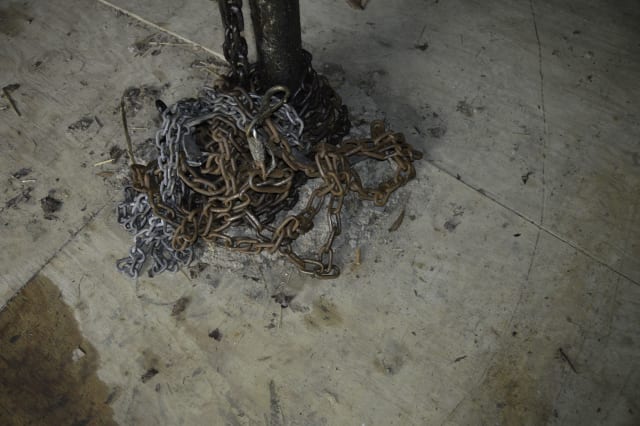

In total there are five kennels – three to the left and two to the right – the sides of which go to the ceiling. The only source of light in each kennel is a crudely cut rectangle at the back with thick wire covering the opening.
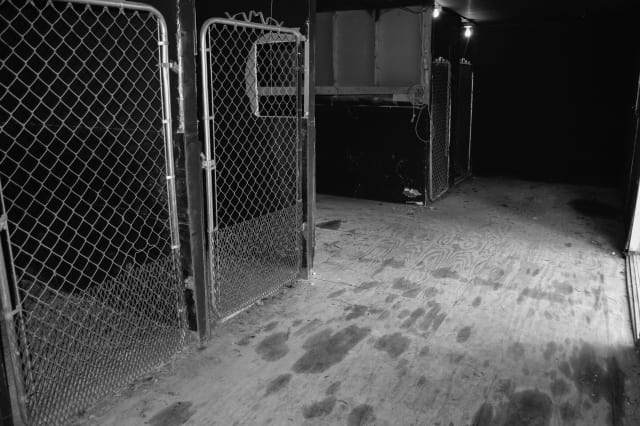

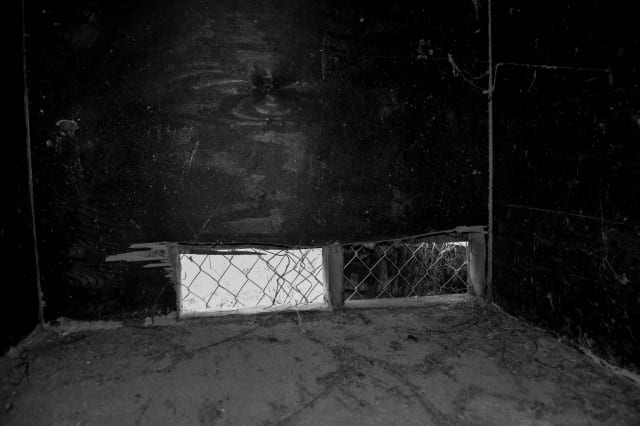

The windows in this shed are the same as the windows in all of the others – painted black so that no one could see inside. The black paint has since chipped, but enough still remains to cloud the view.
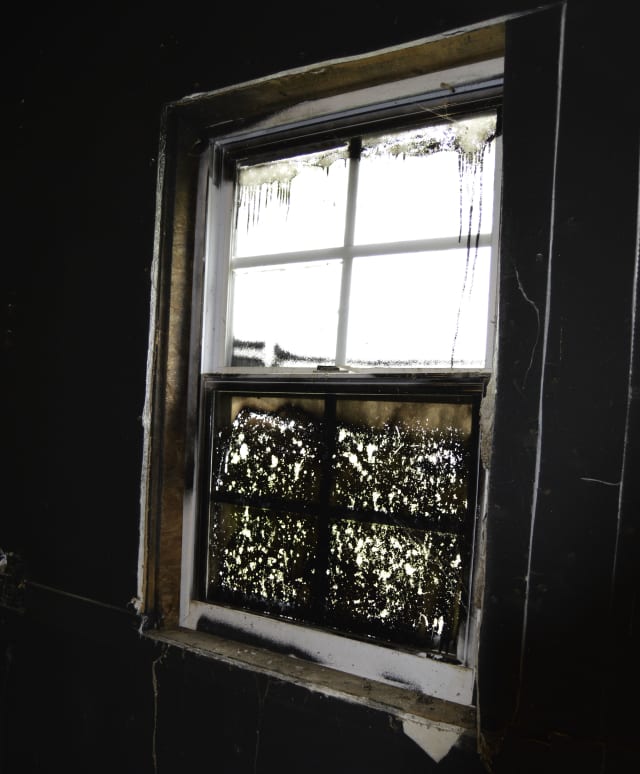

I next went to the biggest shed, two stories tall – the fighting shed. Here, the bottom floor is largely open except for a rickety ladder that leads to the second floor. This is how dogfighters, spectators and the dogs themselves all ascended to the fighting pit.
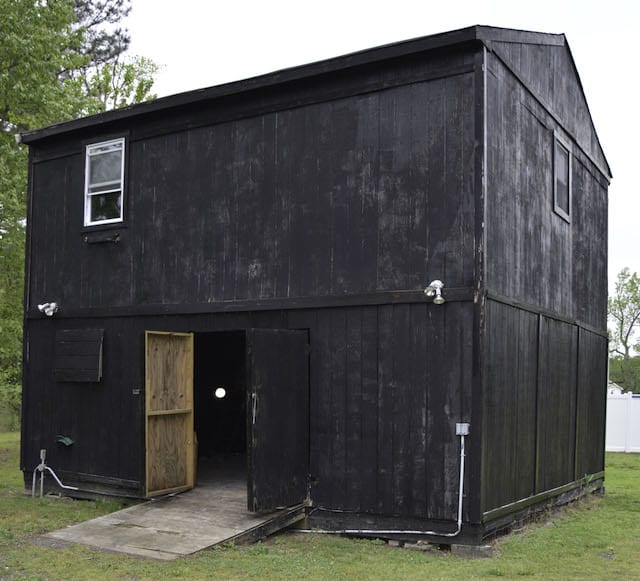

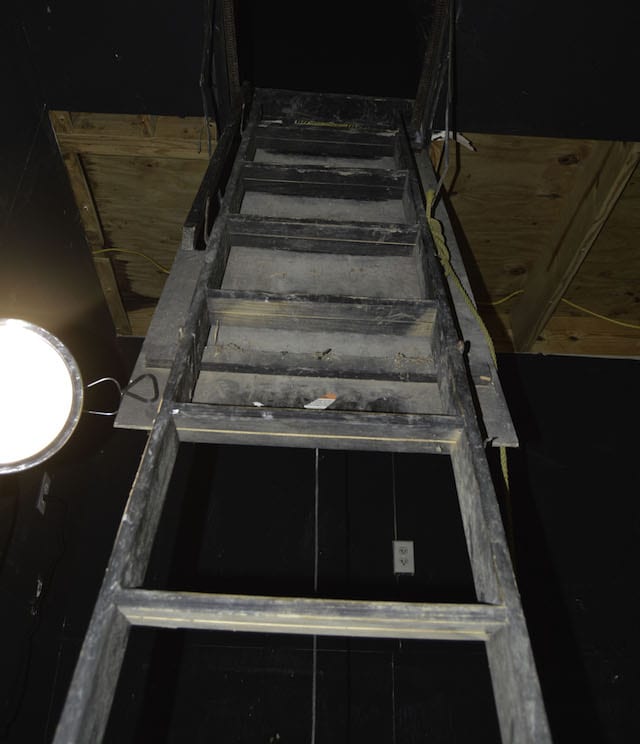

The second floor is also open, as the fighting pit has been removed. Three reminders of what occurred here come in the form of holes in the floor – samples taken from where blood was found during the investigation.
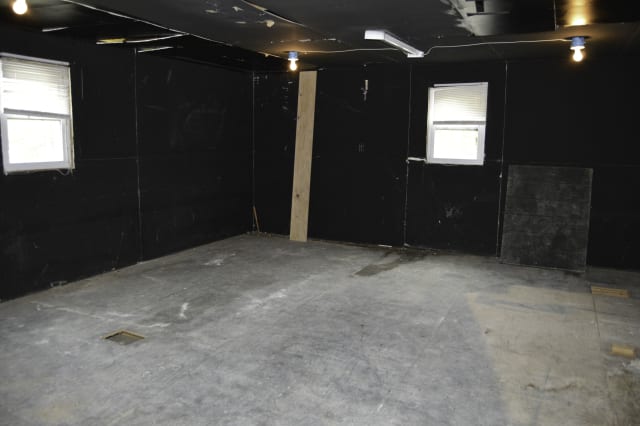

The third shed was the infirmary. It served two purposes – the delivery of puppies and treating dogs who won a fight and were badly injured but deemed “worthy” enough to warrant medical care so that they could, at some point, fight again.


When you first open the door to the infirmary, there is a small pocket of open space to the left. On the outside of the first kennel, in that small pocket, there is a cubby-like area. Needles, a timer and other items, including a can of dog food, can still be found there. On the wooden walls inside of some of the kennels, there are claw marks from the dogs scratching against the wall.
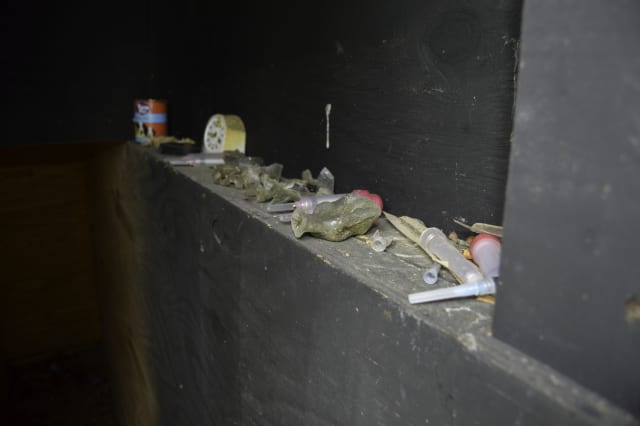

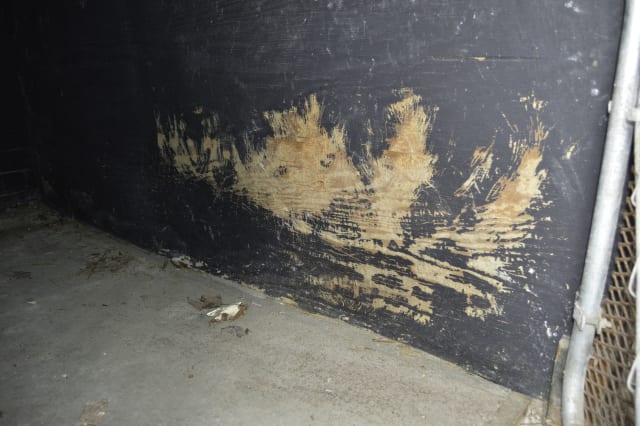

Once you leave the infirmary, kennels built from cinder block sit to the right with small wooden shacks of dog houses sitting at the back of each kennel. This is where dogs brought by opposing dogfighters were kept. In at least one particular incident, it was used to house nine dogs who were deemed “unworthy” to be fighting dogs and, one by one, were taken out of the kennels to be executed.
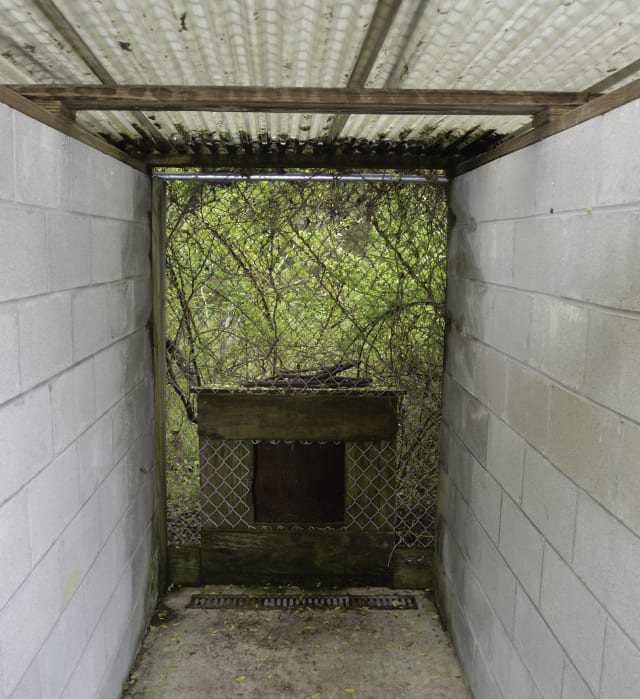

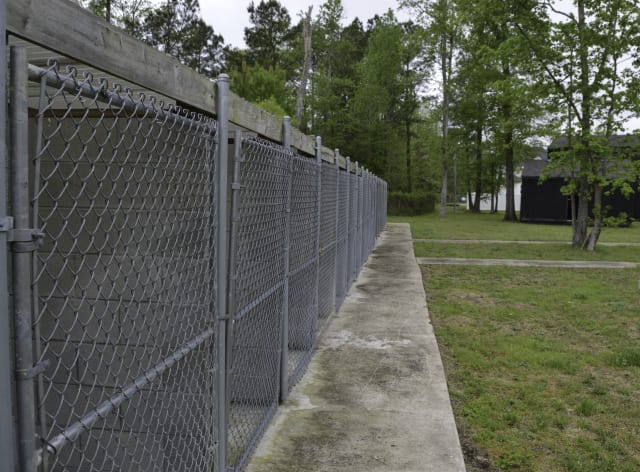

The space that those black sheds and kennels occupy could easily be compared to hell. The boards used to build the sheds are rough and the black paint that covers them reminds me of tar – sticky with weight. But then, just as it did a little over nine years ago for 51 Pit Bull-type dogs, rescue comes.
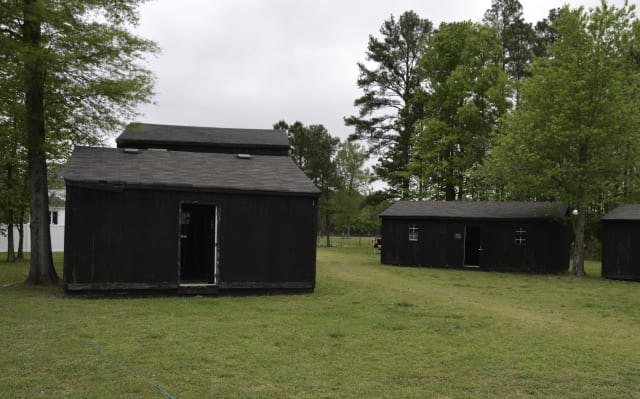

The field of trees, which were just planted the weekend of April 30th, used to be filled with woods, thick and impermeable. It’s also where we know at least nine dogs were buried after being killed just days short of rescue. Now, that space is cleared, ready for its new purpose.
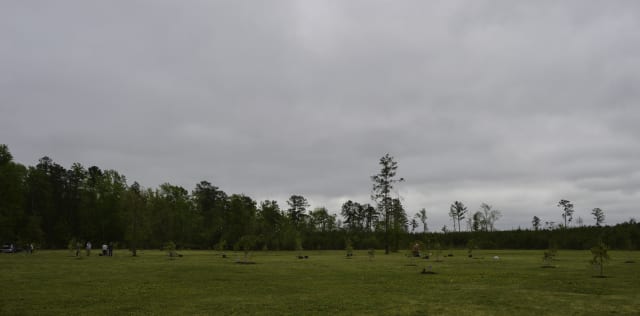

On the weekend of April 30th, 2016, Dogs Deserve Better held a private tree planting ceremony in that field for the families of the dogs as well as those who were instrumental in the saving and subsequent rescue of these dogs.
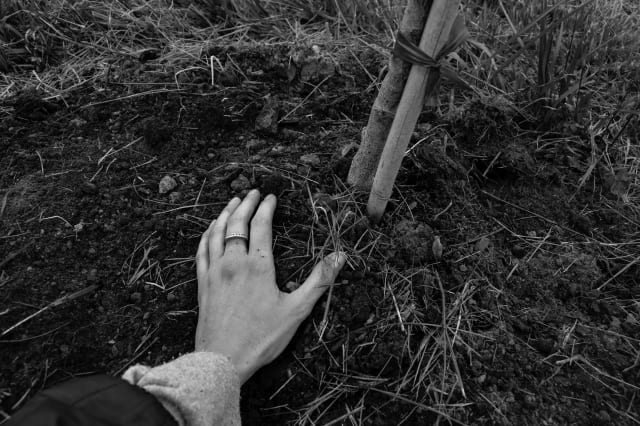

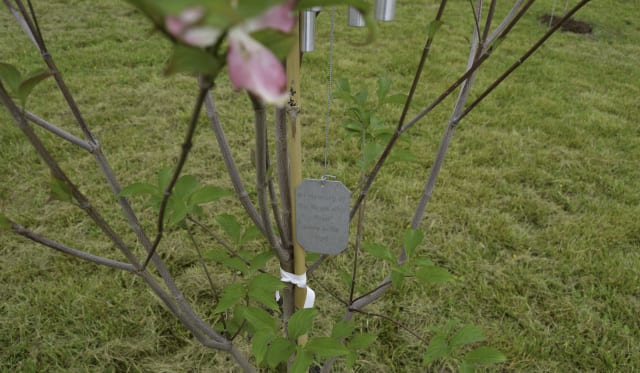

It was also a chance for some of the families to finally meet one another. Although multiple families make up all of those who adopted these dogs, it’s really as if there’s just one. Despite distance, so many of the families are woven into each other’s lives, and to love one of these dogs is to love all of them. They celebrate the successes of one another, grieve through loss together, provide comfort during uncertainty and love deeply and fiercely as one.
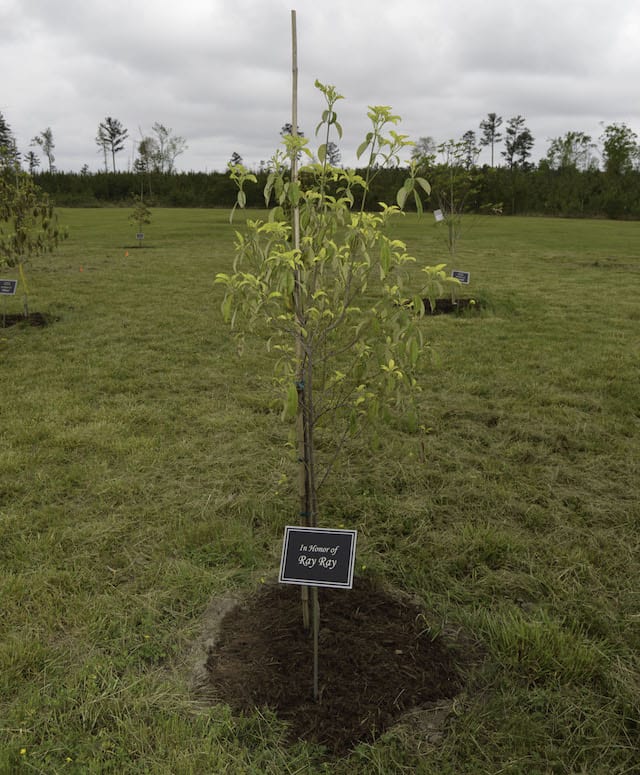

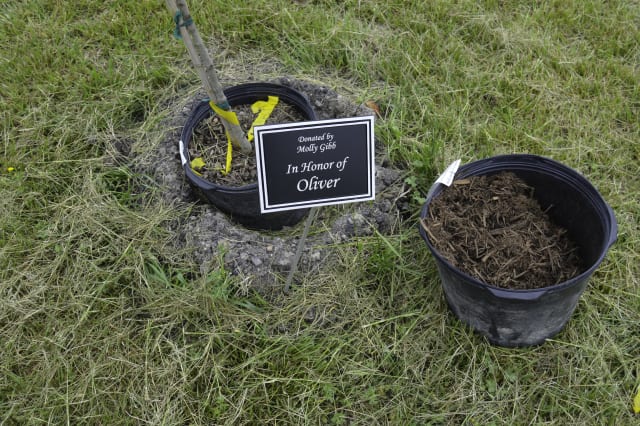

As some families of these dogs were unable to attend, others planted their dog’s tree for them. When it came time to plant a tree for Little Red – whose mom, Susan, was not able to attend – Rachel (Oscar‘s mom), Kevin (Ray‘s dad), Wayne and Caroline (Handsome Dan‘s grandparents), and Tess (Layla‘s mom) all gathered. Some dug, some spread dirt and mulch, another recorded everything for Susan, and all of them bore witness to the honoring of Little Red’s life.
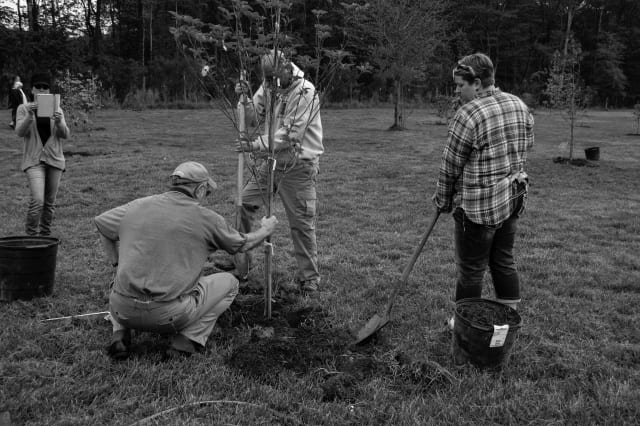

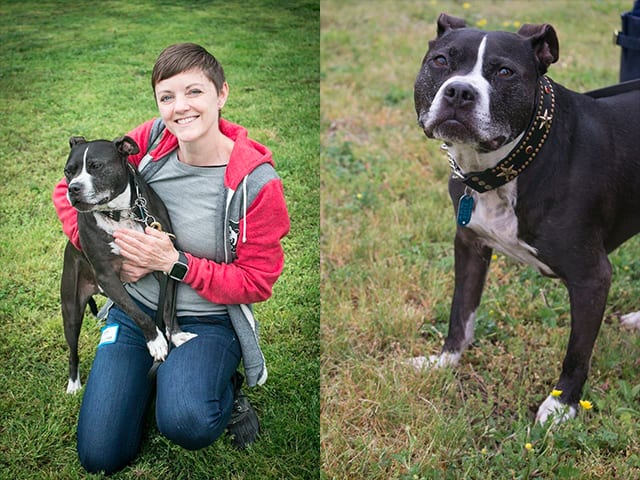

Once Mel‘s tree was planted and mulched, Rachel called Mel’s dad, Richard, who was unable to attend, and put him on speakerphone, sending his voice through the field to his boy’s tree.
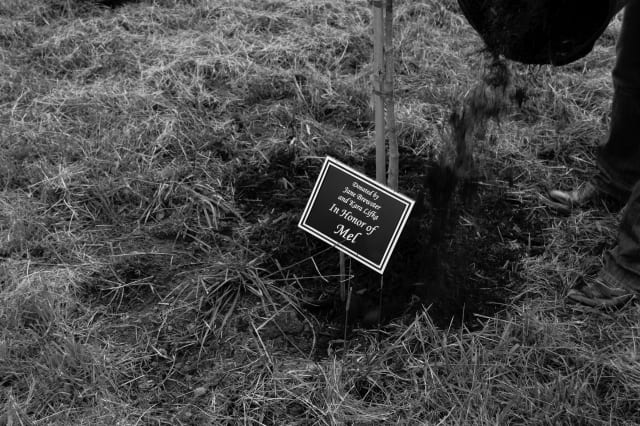

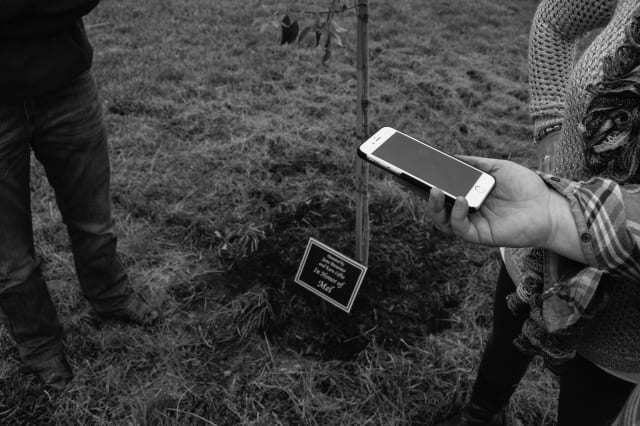

Amy, Georgia‘s mom, brought small heart-shaped rocks and stones, each purposefully picked for a dog and their family. Handsome Dan‘s rock displays the message, “You are my heart.” Layla’s stone – a smooth, orange heart – has the word “Peace” inscribed on either side. For her own dear girl, Amy placed a rock that read, “Those we love never truly leave us.”
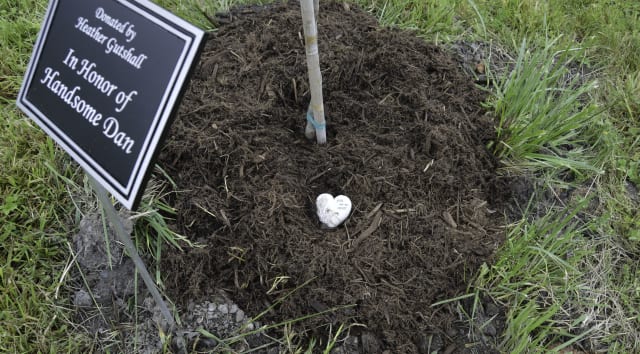

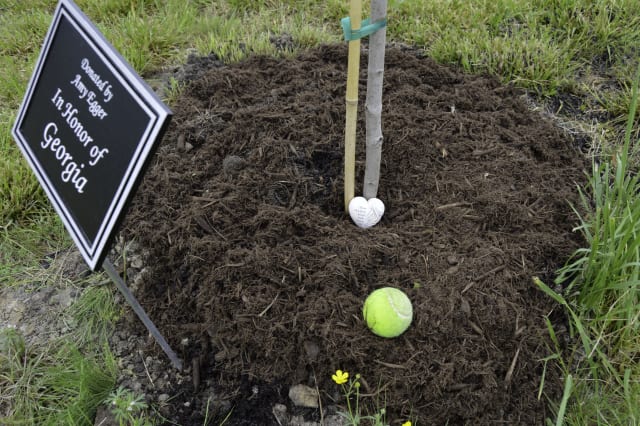

Families planted trees both Friday and Saturday, which culminated in a total of 51 pink and white dogwood trees, one for each of the dogs, and another one, a weeping cherry tree, for all of the dogs who did not survive to see rescue. The weeping cherry tree welcomes you to the field of trees, front and center, as if to tell you that all of the dogs that tree is planted for, as well as all of those honored by the other trees in the field, are now okay.


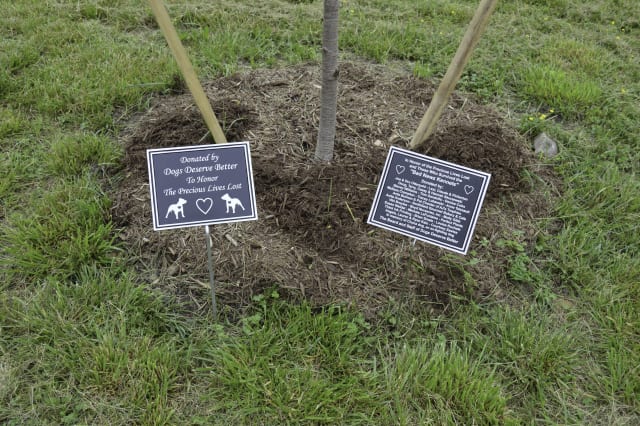

Simply being in that field is one the most beautiful, peaceful and positive experiences I’ve ever had. It’s almost as if the energy between these trees – the love – can be seen dancing from leaf to leaf, playing back and forth between one another. You become encapsulated in that field, like some kind of shield sits around you and all that you can see and think of is right there.
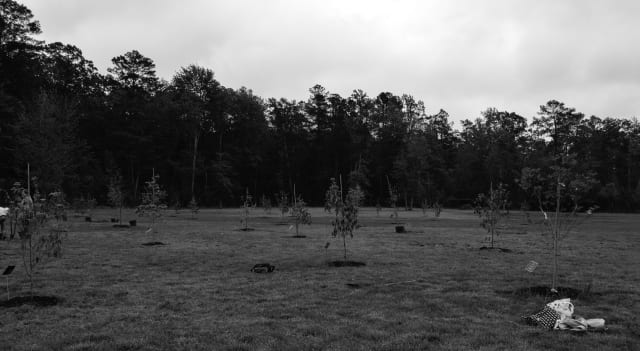



When I was in that field, I had not one thought about the sheds. It’s as if they weren’t even there. If there is any kind of testament to the incredible power of the love of these dogs and their families, for me, that’s it. The searing pain of those sheds became nothing because of that field. Love overwhelmed and triumphed, just as these dogs have done.
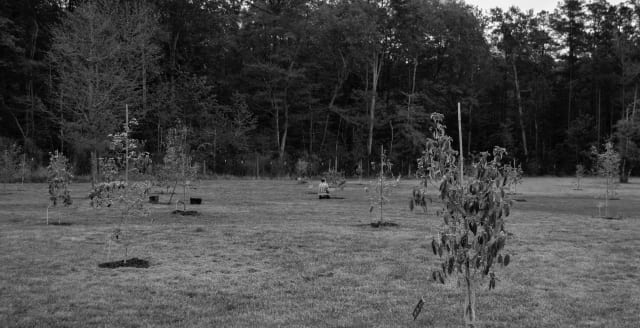

Nine years ago, these dogs were rescued because groups like BAD RAP and Best Friends Animal Society spoke up and demanded that they be given a chance – that they not automatically be euthanized as was typical for dogfighting victims. They were placed with rescue groups all throughout the country and a few were court-ordered to live their lives at Best Friends Animal Society in Kanab, Utah. Many of the dogs have been adopted into loving families, some who choose to share their dog with the world through social media and public events, while others have preferred to have their dog live a life with more anonymity. Some of the dogs became therapy dogs, some live with children, other dogs, cats, parrots and some prefer to be an only pet.
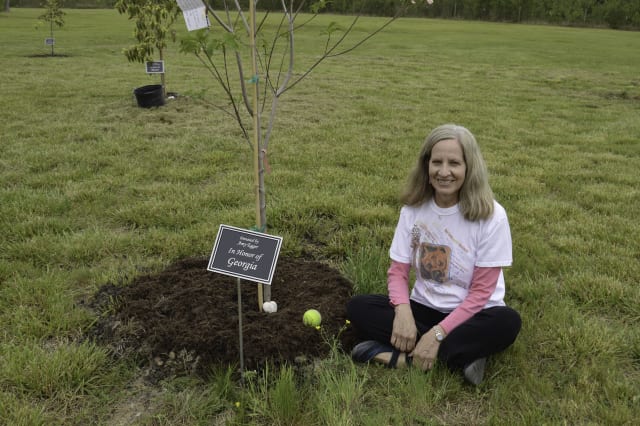

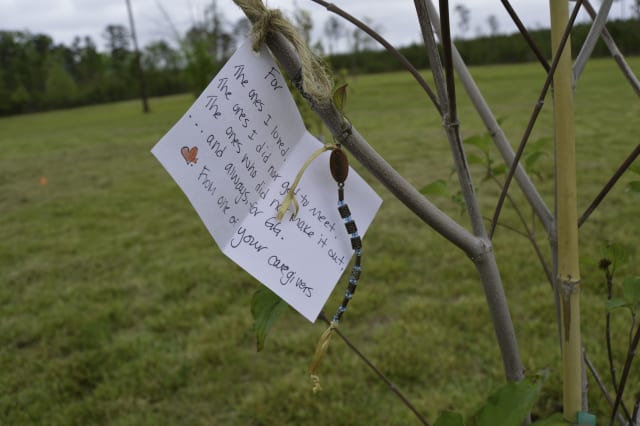

As I think of these dogs, now nine years removed from Moonlight Road, I think of their growth and the breadth of what that is between all of them. Some recovered more quickly than others, some have been outgoing and social while others are more reserved. They all have their own likes and dislikes, just as any other dog.
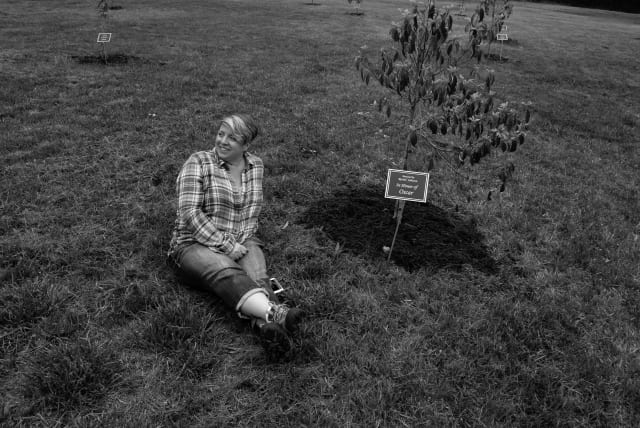

And with the thought of these dogs, I turn to the trees, a physical tribute and symbol to each of them. Still young, some trees were tall and thin, others off kilter and more rounded, like Layla and Oscar’s trees. Some already had a few blooms while others simply had leaves.
But they’re here. They’re all growing.
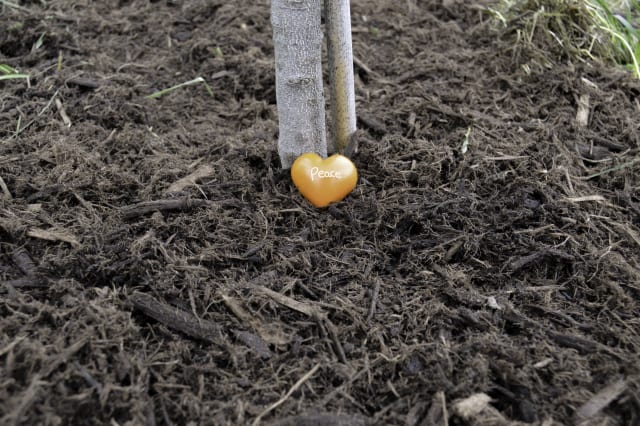

To learn more about Dogs Deserve Better, the organization behind Good Newz Rehab Center and this incredible tribute, click here.
Featured image via Dogs Deserve Better/Facebook (of Hector The Pit Bull‘s parents)



